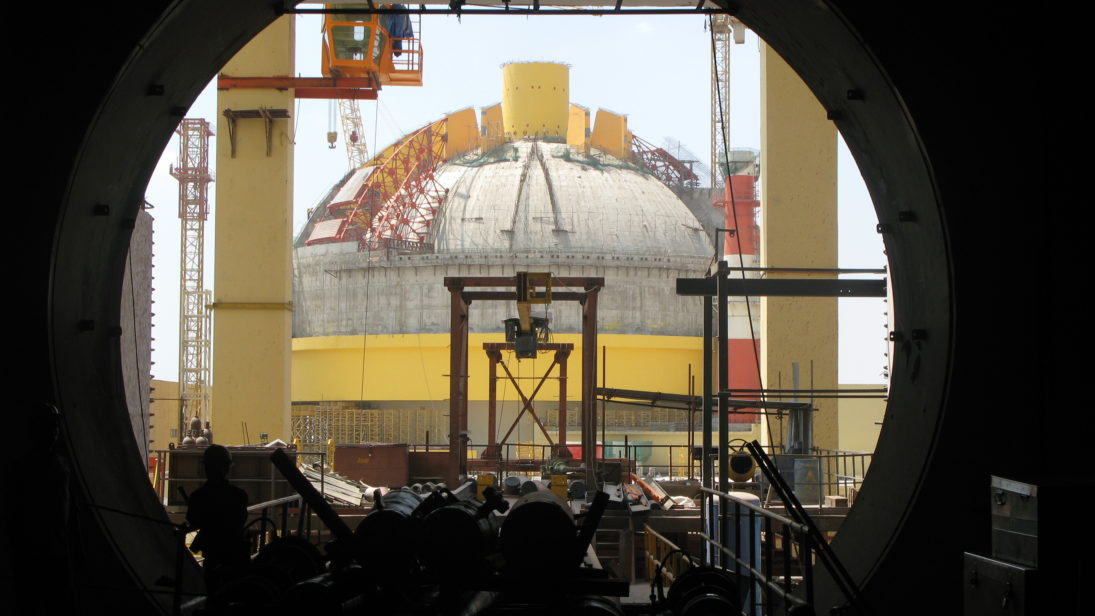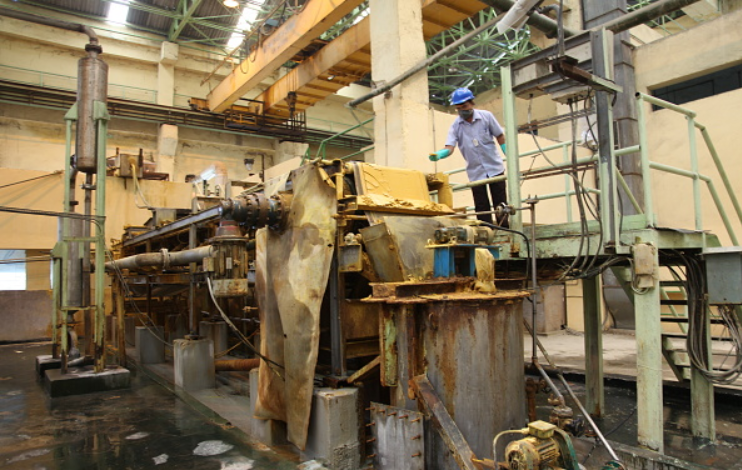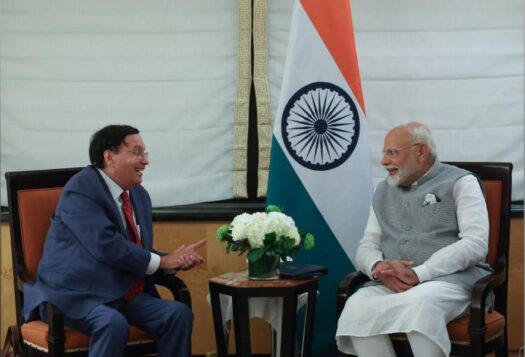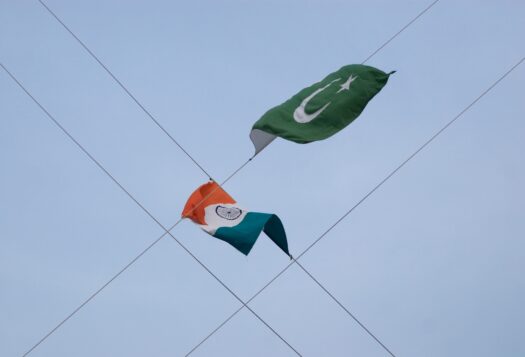
Although in many ways a targeted attack on nuclear scientists or engineers is unique to the security situation of each country and cannot be extrapolated to another country’s security discourse, attacks on nuclear scientists nonetheless raise essential questions for any nuclear state. Is the security of nuclear personnel—including scientists and engineers—integral to the security of nuclear assets in a country? Are nuclear personnel even considered nuclear assets and given appropriate weight in the nuclear security framework?
While there is increasing awareness today on the security of nuclear installations worldwide, driven in large part by the Nuclear Security Summit initiative initiated by former U.S. President Barack Obama, scant attention seems to have been paid to the status and adequacy of security provided to nuclear personnel who are the main drivers of any nuclear program. Leading scientists, engineers, and personnel are assets whose replacement or elimination can hamper an entire nuclear program. For instance, the killing of Iranian nuclear scientist, Mohsen Fakhrizadeh in 2020, has been said to have “clearly damaged” Iran’s nuclear program.
Examining this topic from India’s perspective, this essay analyzes the security arrangements in place for the protection of Indian nuclear personnel keeping in mind the sporadic attacks on scientists elsewhere, and reported “unnatural deaths” of scientific personnel in India in the past decade. Using open-source information available on India’s current nuclear security framework for nuclear personnel, this essay looks at what is known about the current protections for addressing various threats for nuclear personnel and puts forth recommendations for better addressing potential risks in the future.
The Threat to Nuclear Security Personnel
So far, no major nuclear security-related incidents—that is a Pelindaba break (South Africa, November 2007) style attack breaking into nuclear facilities—has occurred at India’s nuclear installations. There has also not been a confirmed targeted killing within India’s nuclear scientist community. However, between 2009 and 2013, there were multiple unfounded reports of “unnatural deaths” of Indian nuclear scientists. A number of scientific personnel have reportedly either gone “missing or died under mysterious circumstances.” In October 2011, the bodies of K.K. Josh and Abhish Shivam, engineers connected with the building of India’s indigenous nuclear-powered submarine, the Arihant, were discovered adjacent to the railway tracks at Penduruthy, near Vishakapatnam Naval Yard. As per answers given in the Lok Sabha, 11 “unnatural deaths” were reported during 2009-13 out of which: “Two cases are due to industrial fire accident, one case of road accident, seven cases of suicide, and one case of murder.” It was reported that after a thorough investigation by the police, however, no case was categorized as “mysterious.”
While there is increasing awareness today on the security of nuclear installations worldwide…scant attention seems to have been paid to the status and adequacy of security provided to nuclear personnel who are the main drivers of any nuclear program.
Outside the nuclear realm, reports also surfaced in 2009 about the Pakistan-based militant group, Lashkar-e-Taiba’s, plans “to kidnap or assassinate some of the prominent scientists” working in India’s space industry. Even as many reports remain shrouded in mystery—including alarming reports of the deaths of 680 employees of the Bhabha Atomic Research Center (BARC) over a period of 15 years—and in some cases may be unfounded, they underscore the individual threat faced by scientists, and Indian nuclear scientists are not immune to such threats. The reported mysterious deaths have even prompted questions in the Indian Parliament about the protection of scientists.
In the early years of its nuclear program, India was also under scrutiny for its nuclear development. For years before its civilian nuclear tests in 1974, the U.S. Intelligence Community “was monitoring and analyzing Indian civilian and military nuclear energy activities.” Conspiracy theories have also abounded surrounding the death of Homi J. Bhabha on a flight over the Alps in 1966. The official inquiry by France confirmed that the flight had crashed due to pilot error, which failed to convince many. In 2017, a Swiss climber who found remains of the crash while hiking in the Alps noted he thought it was more likely the plane had collided with another aircraft. Unfounded narratives and multiple conspiracy theories of a sabotage plan by the CIA to impede India’s nuclear program have also circulated widely, particularly after the publication of the Conversations with the Crow (2013) by Reporter Gregory Douglas, which asserted that Bhabha, along with then-Prime Minister Lal Bahadur Shastri, was targeted by the CIA after his statement in October 1965 that India could build an atomic bomb within 18 months. In the interviews for the book, Douglas reports former Assistant Director of Clandestine Operations for the CIA Robert Crowley hinting at an “unfortunate accident” of a bomb going off on the same flight Bhabha was onboard. In the context of targeted attacks on nuclear scientists in other parts of the world, can Indian nuclear personnel not be susceptible to conspiracies, even today?
While one must question the authenticity of media reports, such alarming stories attract attention towards the strength of the protective system for Indian nuclear scientists—especially when New Delhi has embarked on an ambitious nuclear energy expansion plan. Given India’s location in a volatile region, threats to nuclear scientists should not be underestimated. The advancement of C4ISR technology also makes it possible to eliminate targets through unmanned remote-controlled stand-off weapons, as was seen in the case of Fakhrizadeh, who was reportedly targeted using a weapon mounted in a pick-up truck.
India by now is an established de-facto nuclear weapon state, and the fear of sabotage of its nuclear program may sound unrealistic today. However, India’s ambitious nuclear energy expansion plan and their considerable scientific manpower are eye-catching; any disturbance in this would derail the expansion plan. Given the triangular strategic competition unfolding in India’s neighborhood, there is the possibility of sabotage of the nuclear program in the worst-case scenario. Regional volatility and proliferation concerns in and outside India underscore potential threats. The malware Dtrack attack, linked to North Korea, on the administrative block of Kudankulam Nuclear Power Plant in Tamil Nadu in September 2019 hints that India’s nuclear assets may be vulnerable to cyber-espionage or sabotage from outside. All these compel one not to overlook the possibility of “systematic outside effort to slow down India’s march towards nuclear excellence by killing those involved in the process.”

Security Measures in Place
No amount of security can be security-enough as the threats to scientists are dynamic and evolving, and directly linked to the health and security of the national nuclear program. Any damage to scientists would adversely affect the concerned country’s nuclear program, through the loss of knowledge as well as exposing vulnerabilities in a country’s security system.
Threats to nuclear scientists can be divided into four broad areas based on their station and operation. First, residential areas of the scientific personnel can be vulnerable and possibly be targeted. Staff quarters are normally located inside the facility premise, therefore are well-guarded. The Government of India highlighted its approach to residential safety in a response to a question in the Lok Sabha in 2015, which noted: “security of scientists/engineers of the DAE [at workplace and] in departmental residential colonies are being audited regularly by an agency of Ministry of Home Affairs and as per their suggestions arrangements are in place.”
Second, the security of scientists during transit (movements in the locality or outstation travels) is more sensitive and necessitates special attention. In the past, by using remote-controlled weapons and artificial intelligence, most attacks on scientists elsewhere have generally occurred while they were on the move. Top-grade Indian scientists are reportedly provided with extra security cover including while on the move, and normally they stay in their departmental accommodations with special travel arrangements. However, it would be difficult to conclude whether the security cover for them can thwart or withstand a deadly drone attack or attack by automated weapons; or prevent a terror attack on academic events like the one on the Indian Institute of Science premises in Bangalore in 2005.
Thirdly, the possibility of insider threats to nuclear personnel cannot be completely side-lined. Instances of misconduct and “act of sabotage” in the nuclear establishment have been reported. This includes the Kaiga incident in 2009 where a small unit of tritium was deliberately mixed in a drinking water cooler by “disgruntled employees.” Although ultimately not a large-scale incident, the Kaiga event does underscore that sabotage of the facility and threat to personnel inside the facility from within is theoretically possible. As this risk falls under broader concerns of rare but costly insider-threat issues—which generally present threats of theft or sabotage—reducing this risk could be done through similar measures such as strengthening security culture and bolstering human reliability programs through employee evaluations and stringent background checks.
Fourth is the possibility of assassination threats from outsiders to personnel working inside the facility. Normally security of nuclear facilities in India are given high priority by the specialized wing of Central Industrial Security Forces (CISF) in coordination with local administration and police. Particularly after 9/11, security in and around Indian nuclear facilities have been augmented, taking into consideration all aspects of threat perceptions, including threats from the aerial and waterfront domains.
Due to the sensitivities involved, there is limited information in the public domain except for blanket assurance by the Indian government that stringent security arrangements are in place and regularly audited by the Ministry of Home Affairs. In times of threat, India’s top scientists have been provided with some of the highest security categorized as X, Y, or Z/Z+ category security (with Z+ being the highest and mainly reserved for high-level politicians). It is possible other personnel are also provided certain security cover, though not known publicly. However, the security norm seems largely based on “secretive institutional framework.” It has been argued that “if secrecy is a matter of life and death, security breaches are likely to be fewer and farther between.” Is the strategy of secretiveness or anonymity adequate to ensure security of scientists? This strategy might work for thwarting terrorists, but may not be so for foreign intelligence agencies. Surveillance of personnel from designated residential area (if located outside the facility) to their place of work over a period of time would be easy enough to identify pattern of movements and weak spots for attacking or kidnapping.
The security of the “human factor,” starting from upper echelon to the rank-and-file in the organization, is integral to nuclear security. Given the susceptibility of personnel, the security of Indian nuclear scientists is normally part and parcel of their selection process, training, and personnel reliability program (PRP). Many layers of the safety and security arrangement are embedded into the day-to-day operation in coordination among departmental security and central security agencies. India’s nuclear establishment follows a stringent PRP designed with several lines of inquiry. Generally, continuous background checks of the employee are conducted to verify identity, credit history, criminal history, reputation, and character. A series of psychological and medical screenings are used to evaluate the mental health and stability of the individual, taking into consideration aspects such as depression, schizophrenia, epilepsy, blood pressure, and other disorders. Similarly, the Nuclear Power Cooperation of India Limited (NPCIL), which operates the country’s civilian nuclear power plants, and the Atomic Energy Regulatory Board have mandated the Code of Ethics and Conduct requiring “commitment for ethical professional conduct from every director and senior employee.” However, suicide as a cause of death of several scientists emphasizes a greater need to evaluate the mental health resources in the PRP.
Ultimately, nuclear security must span beyond securing nuclear installations and address the perceived gaps in the security system in place—including the protection of scientific personnel.
The NPCIL has also instituted a Vigilance Directorate, in line with similar directorates of other agencies, which has the objective “to eliminate or minimize factors which provide (an) opportunity for corruption or malpractices through in-depth examination…[and] regular inspection and surprise visits,” ensuring prompt observance of proper conduct and ethics relating to integrity. According to the corporation, it maintains surveillance on employees who have access to sensitive parts of the plants and performs regular and surprise inspections to detect possible misconduct. The Bharatiya Nabhikiya Vidyut Nigam Ltd. (BHAVINI), another public sector undertaking involved in the nuclear program, has its own “code of business conduct and ethics” for board members and senior management along with a Fraud Prevention Policy to provide a system for prevention/detection/reporting of any fraud that is detected.
A Prognosis
Security of human assets in the nuclear industry is a sensitive issue which every nuclear state tries its best to secure—often with utmost secrecy. But real threats remain. There is limited literature or global debate on nuclear scientists as an integral part of security architecture around the nuclear program of a country; rather, the matter is left to individual countries to deal with.
Though individual countries are conscious of the threat, no amount of security can be secure enough, and there is always scope for improvement. Some argue that appropriate attention has not been paid to the perceived threat to scientists in India, and others have highlighted the shortage of security staff and resources. One recommendation, is for India to develop a separate security force similar to that of the United Kingdom’s Civil Nuclear Constabulary that can be tasked to secure nuclear facilities and personnel specifically. Moreover, sometimes abduction or “mysterious deaths” are counted as “known risks” that a nuclear scientist understands, or as “work hazards,” and such incidents are ignored. Undoubtedly India has evolved and nurtured a coherent nuclear security culture, but any complacency on this particular issue should be dealt with at the highest levels.
Therefore, the urgent need, first, is to change such narratives that exclude personnel from plans to secure nuclear assets. Second, as noted in an Observer Research Foundation by Rajeswari Rajagopalan: “Details of key measures India has adopted such as PRP need to be publicized because, in the absence of such outreach, partners [and the public]…have remained ignorant of India’s nuclear security accomplishments. India has to find a fine balance between nuclear security and transparency.” Keeping in mind the past attacks on nuclear scientists in various parts of the world, there should also be a global collaborative program to strengthen “nuclear security beyond the installations and machines” possibly with the help of IAEA. The priority should be to develop and draw lessons from global best practices involving the security of human nuclear assets. As India makes rapid scientific advancements and furthers its path of self-reliance, a “national scientists’ protection act” can be formulated to address possible deaths and assassination threats to scientific personnel. This would establish specific domestic legal framework and fast track legal process to address issues relating to investigation on alleged threats, professional deaths, etc. Ultimately, nuclear security must span beyond securing nuclear installations and address the perceived gaps in the security system in place—including the protection of scientific personnel.
Editor’s Note: This article is part of series of pieces published in partnership with CRDF Global. Articles for the series, written by recipients of the CRDF-SAV research grant in nuclear security, cover topics ranging from cyber security at civilian nuclear energy sites, regional and international cooperation in South Asia, to personnel protection at nuclear sites, and other topics related to nuclear security on the subcontinent.
***
Image 1: IAEA Imagebank via Flickr


